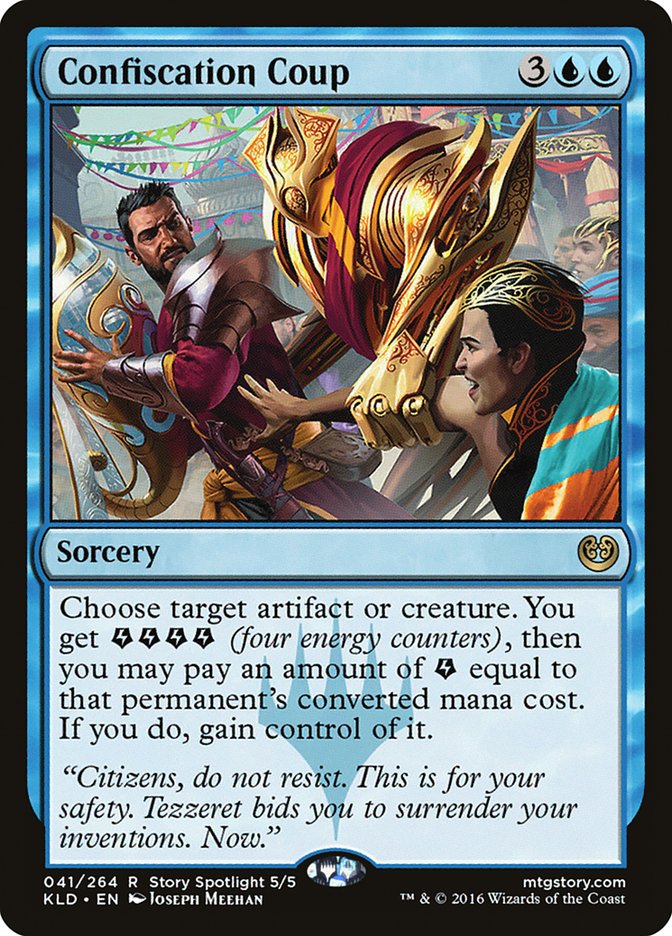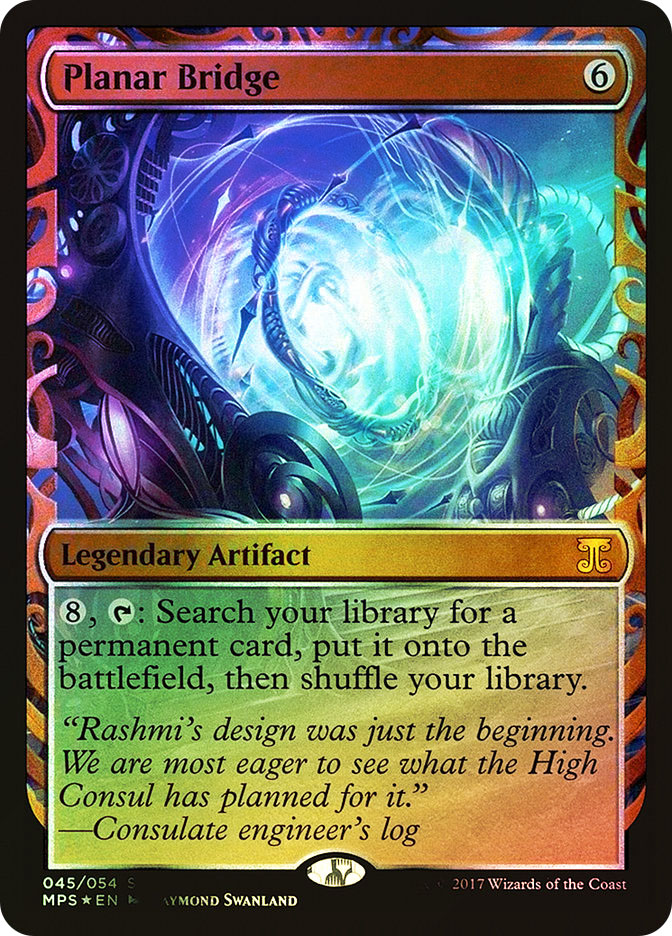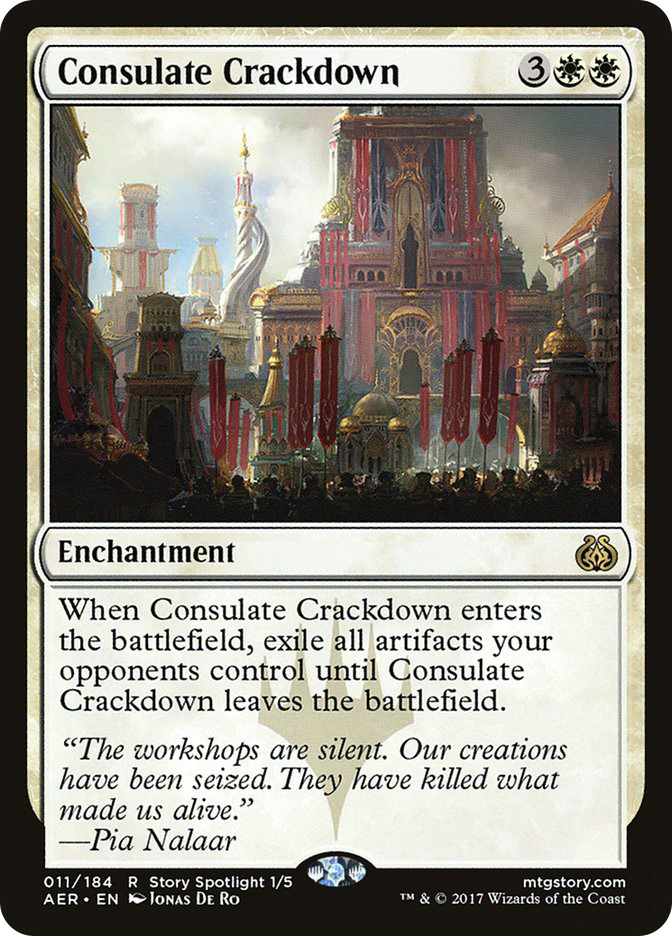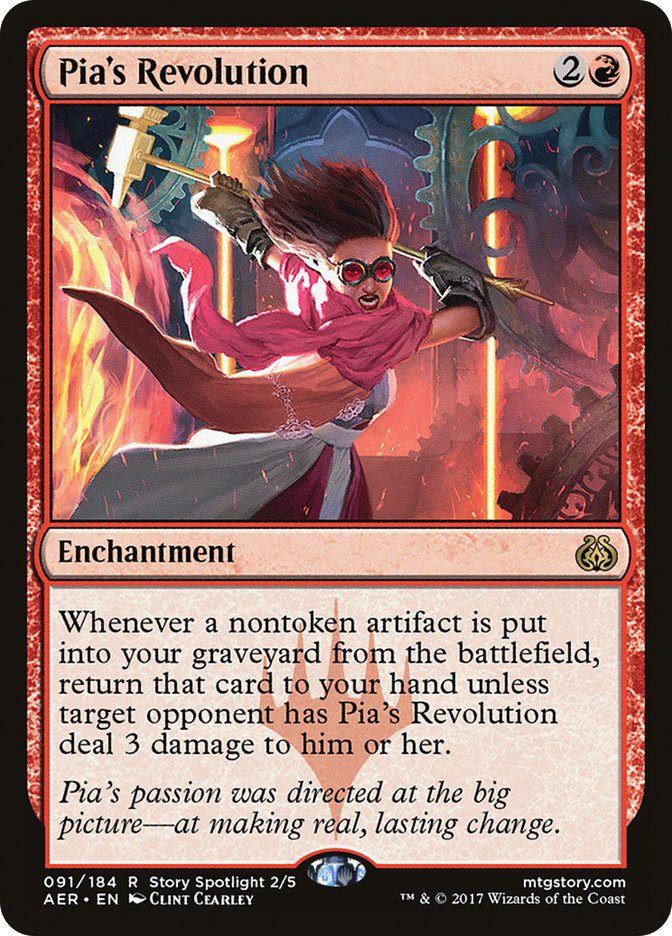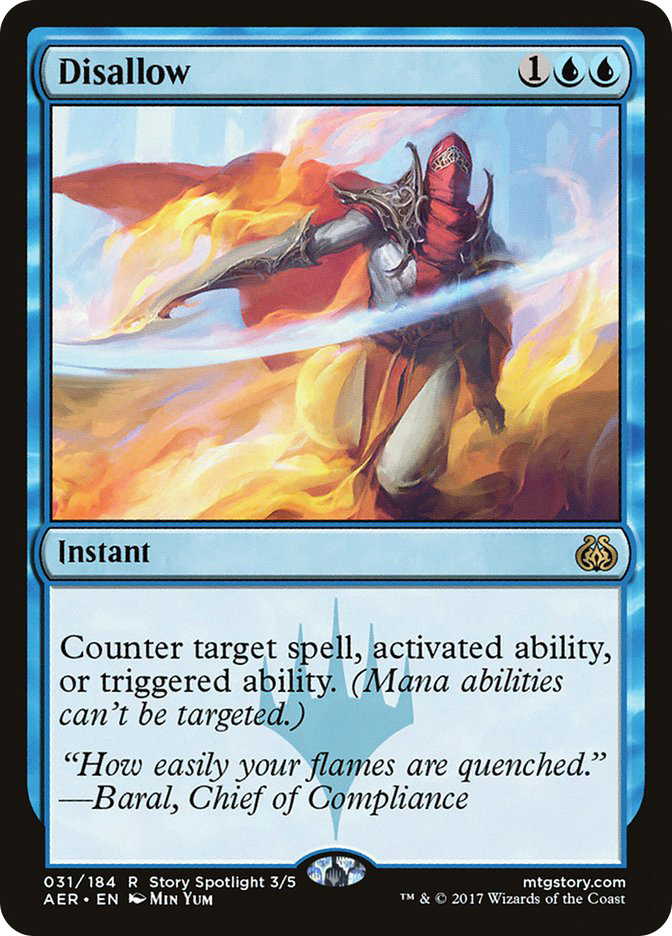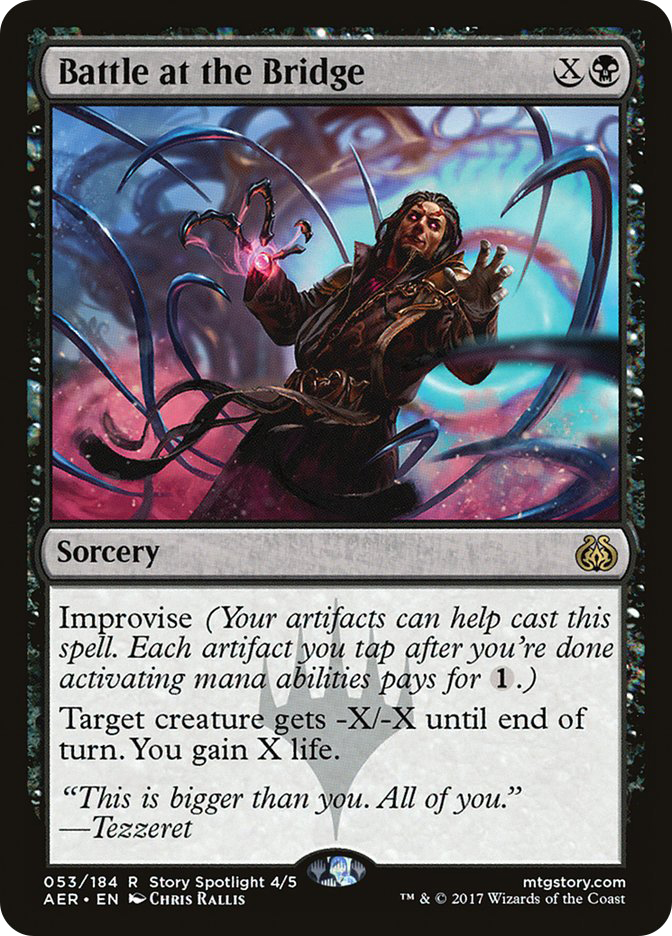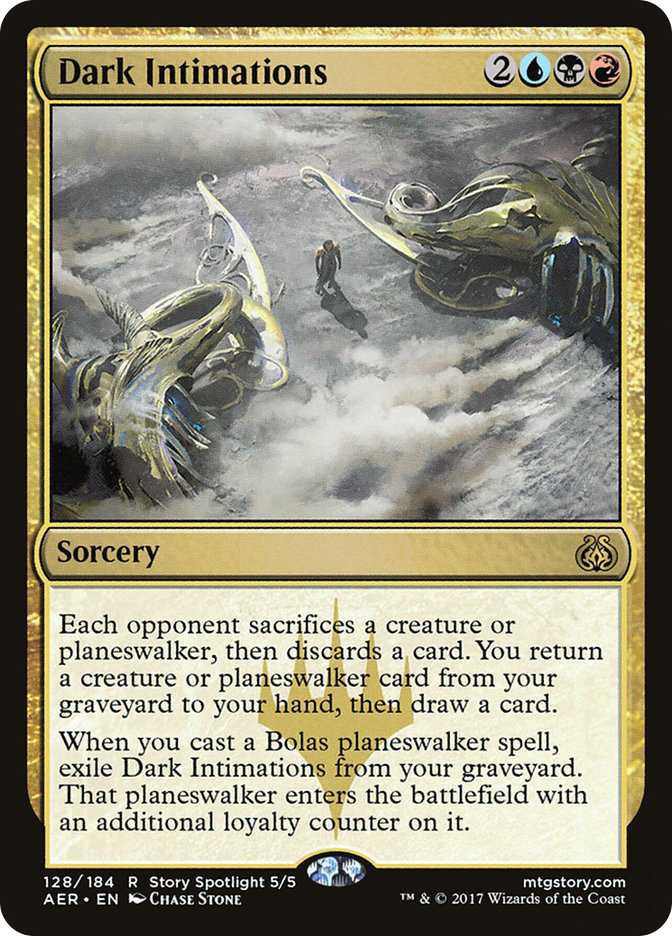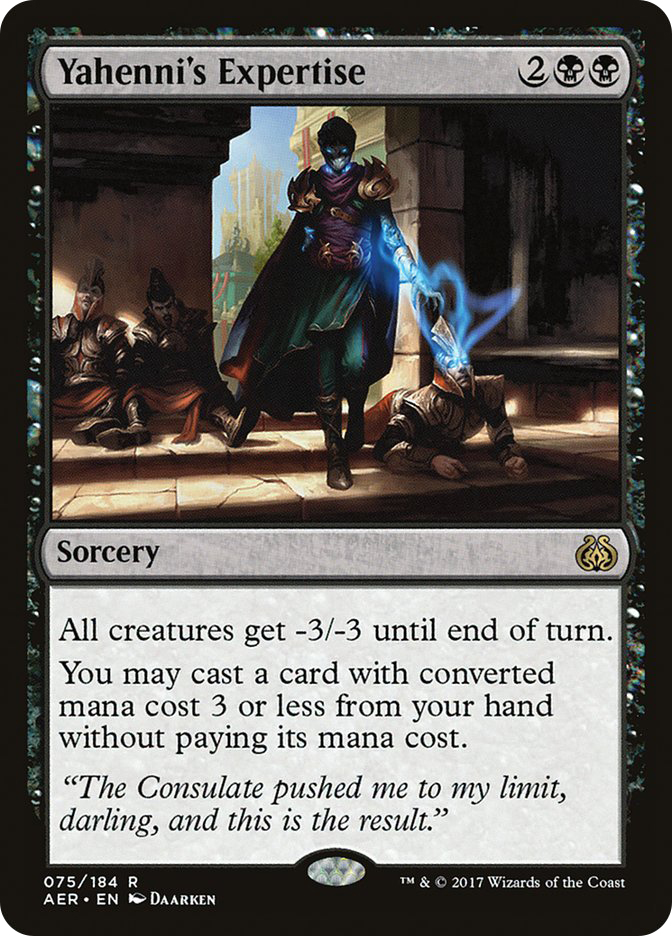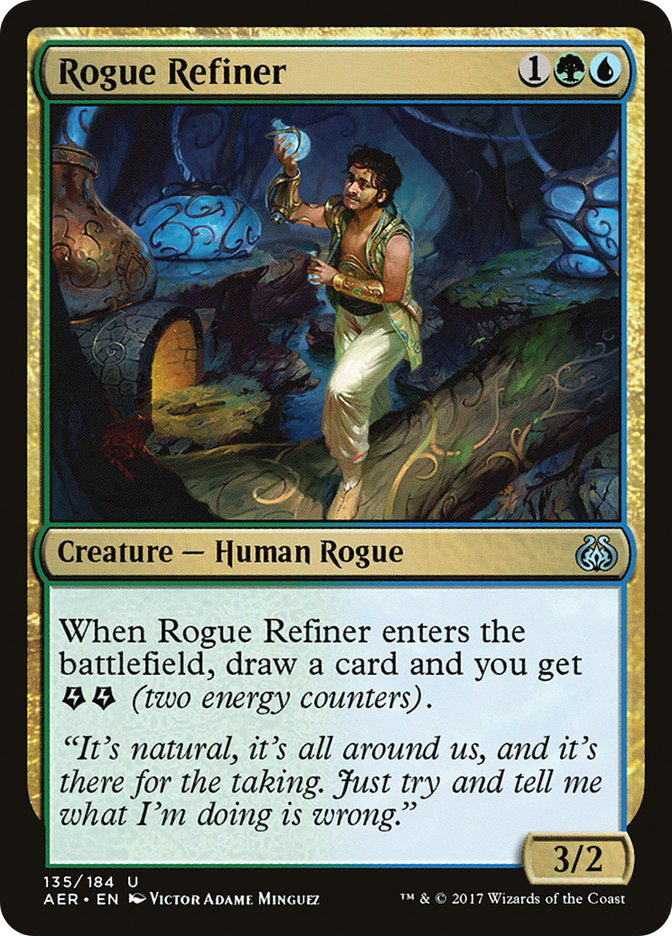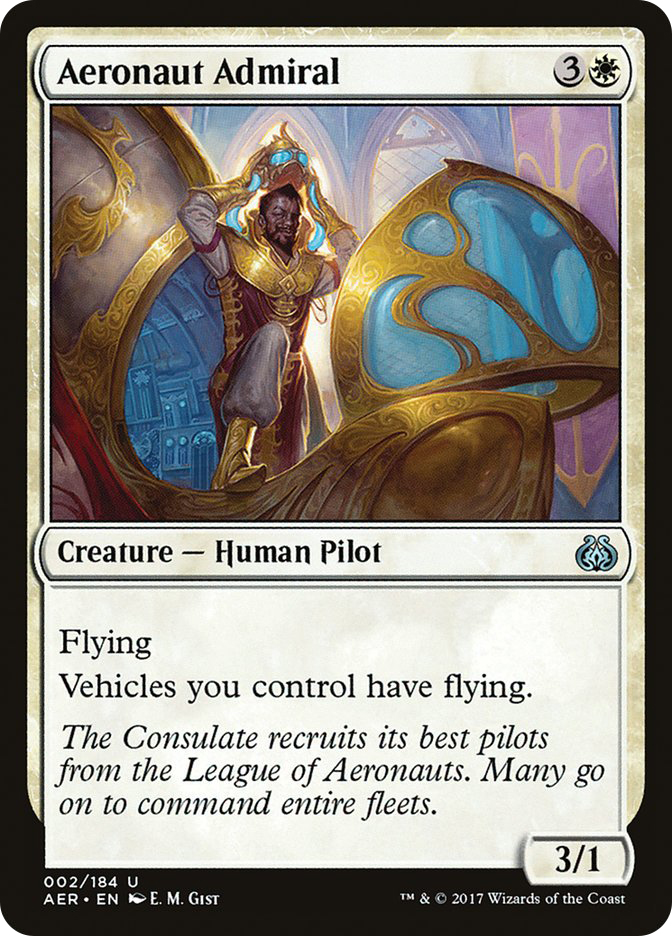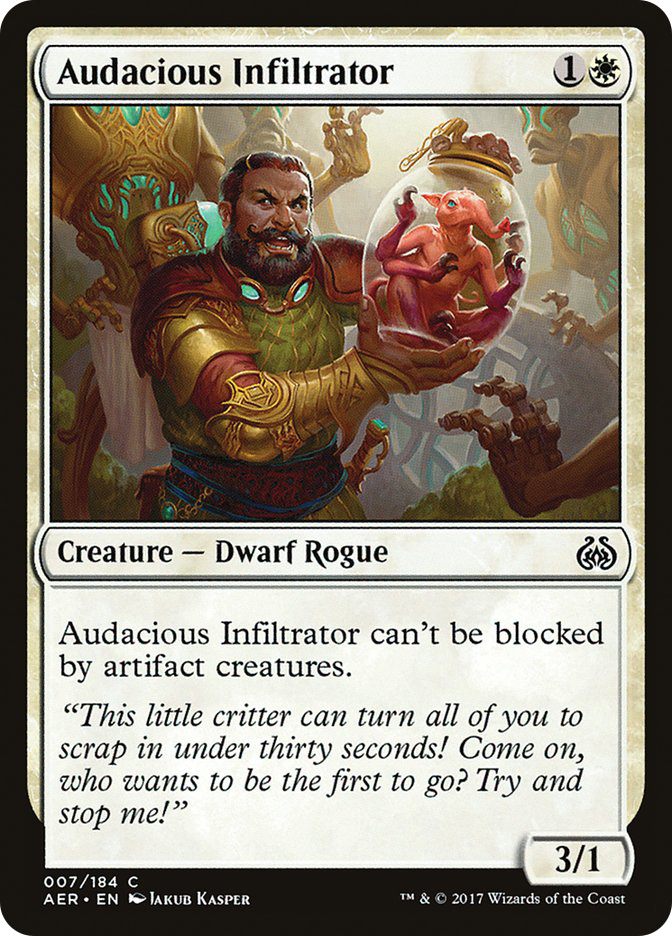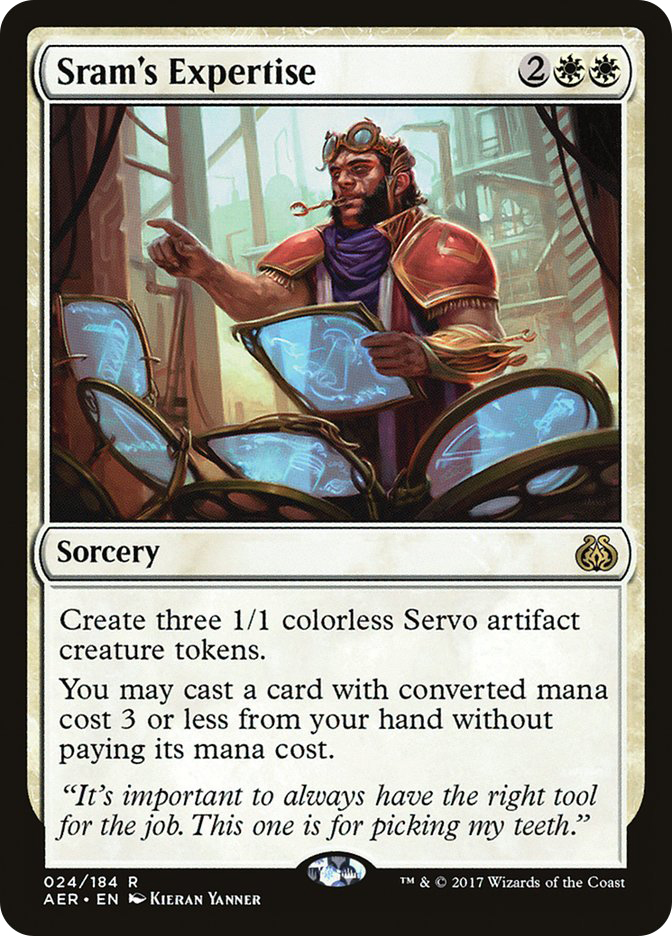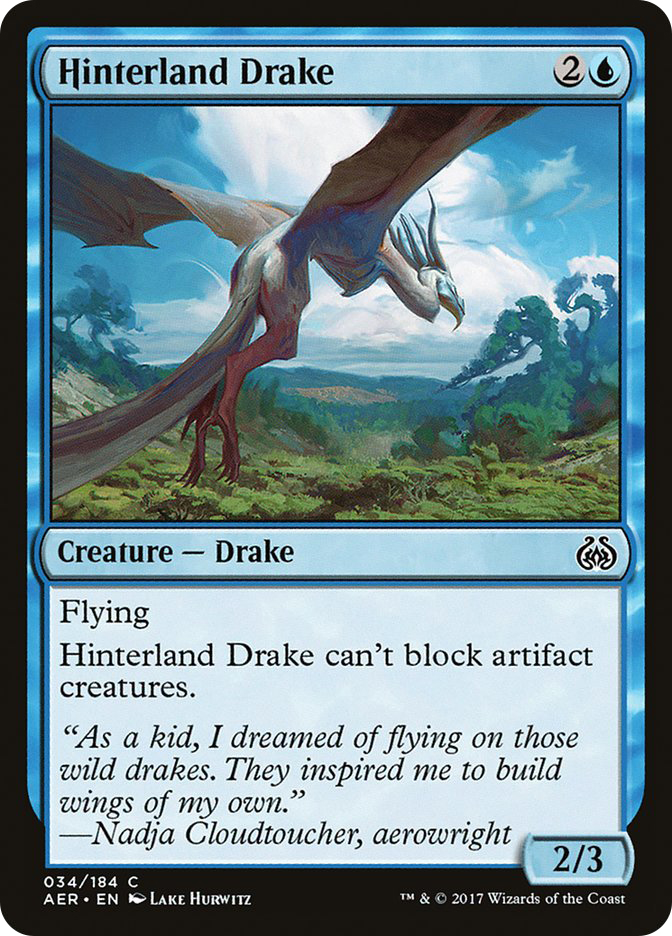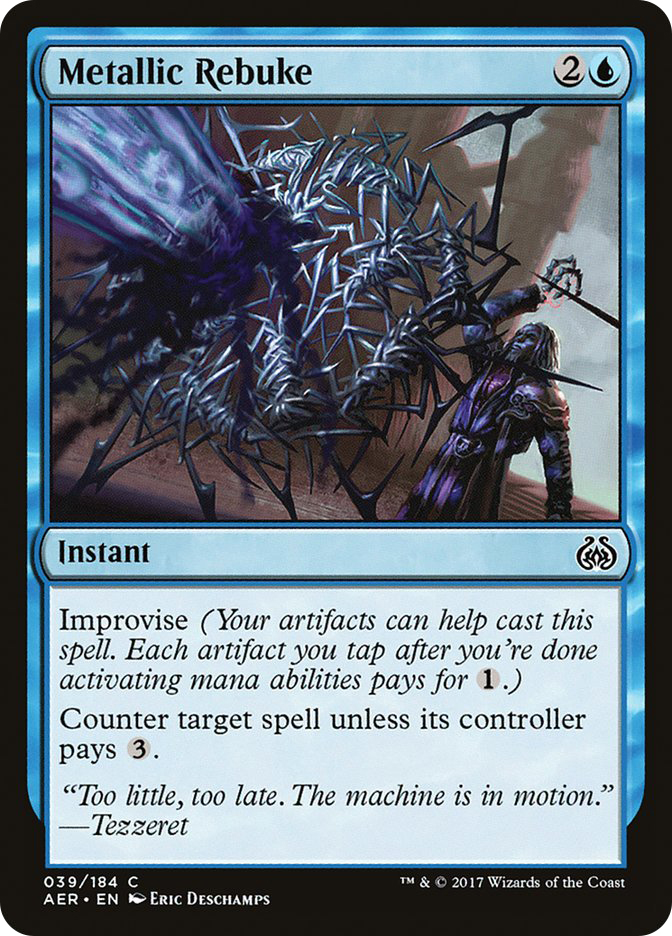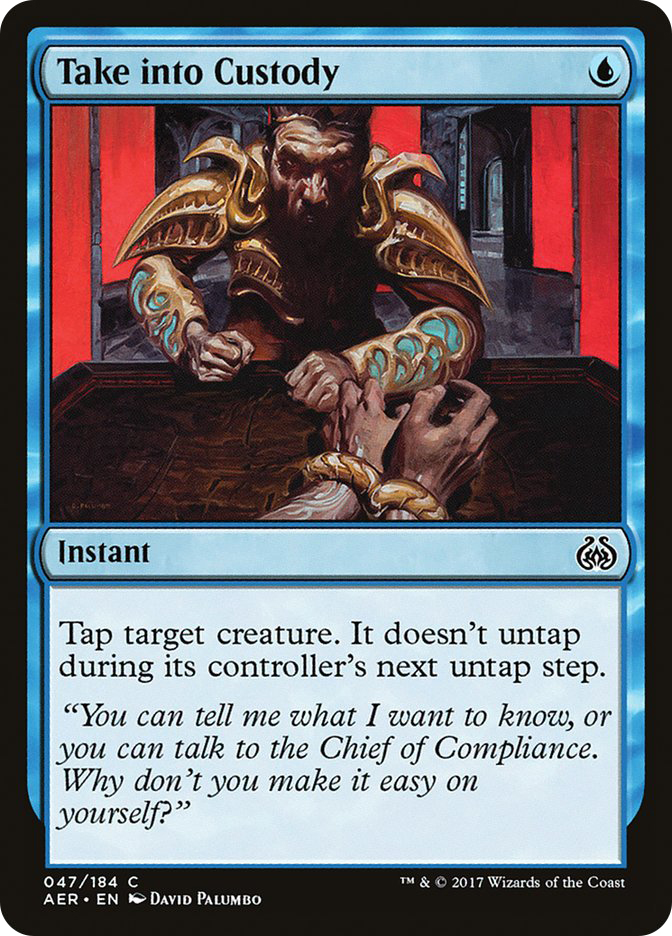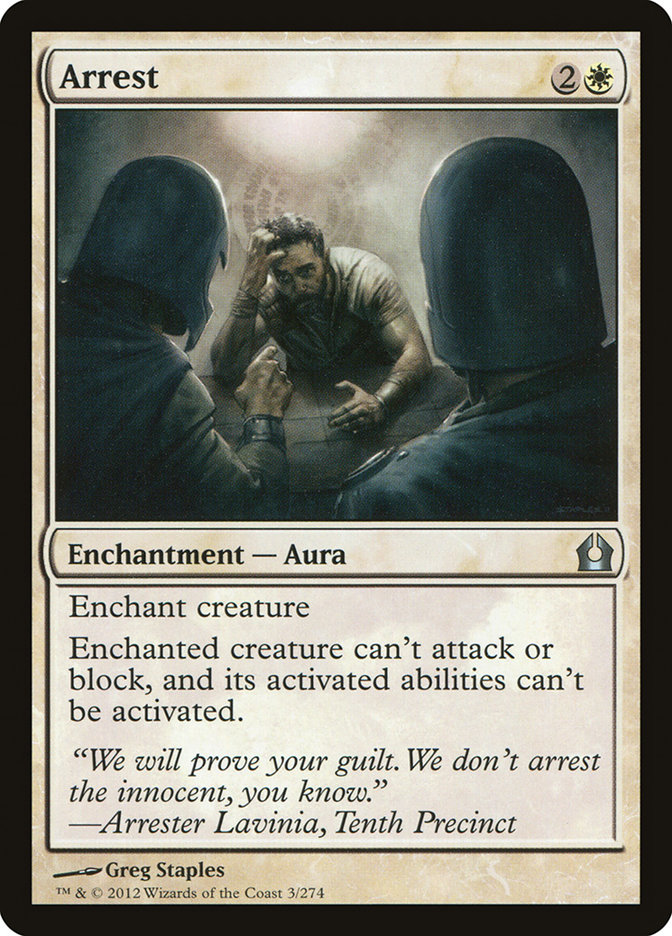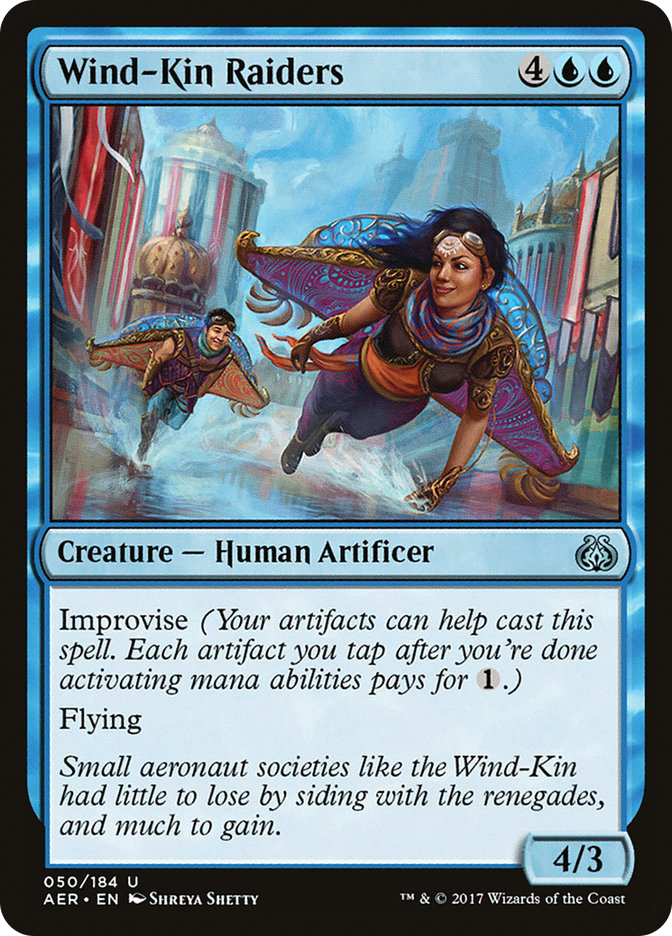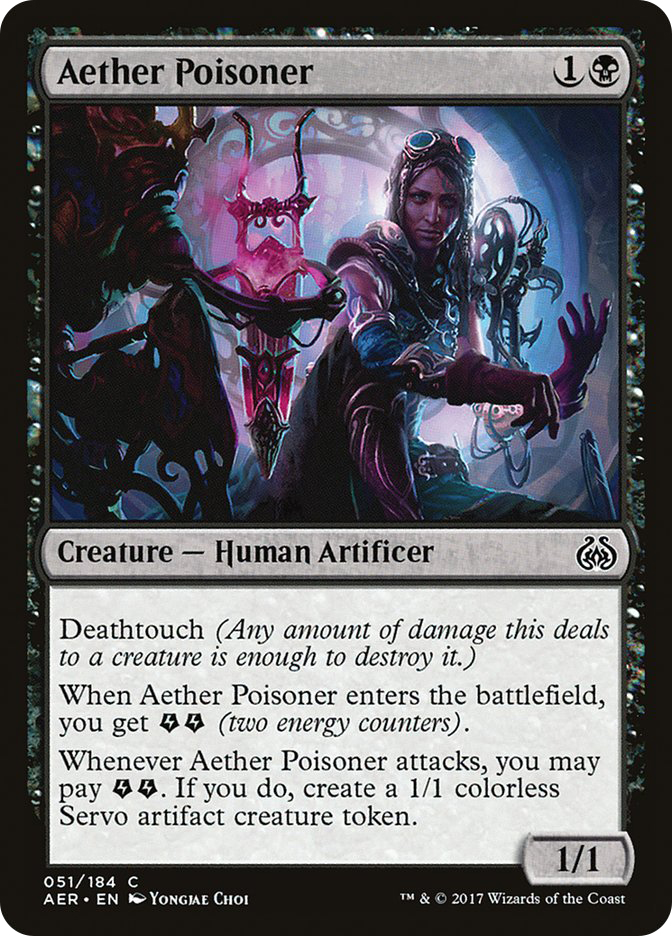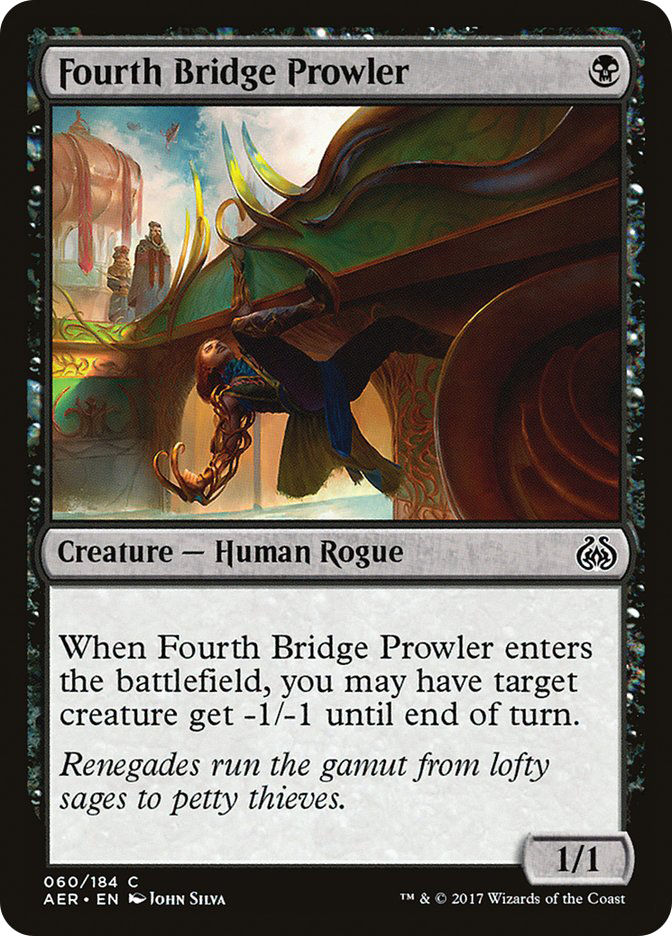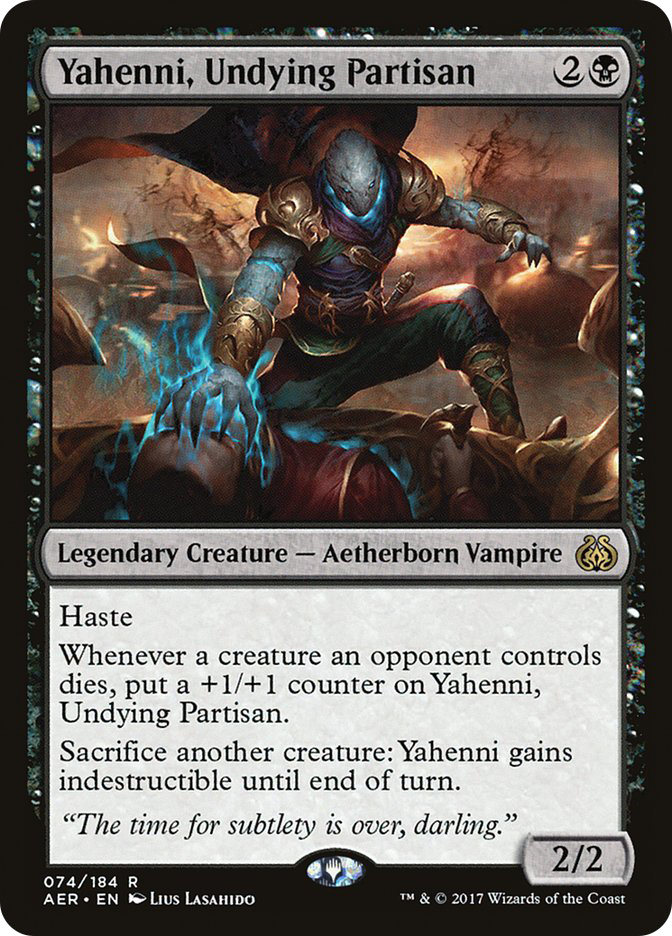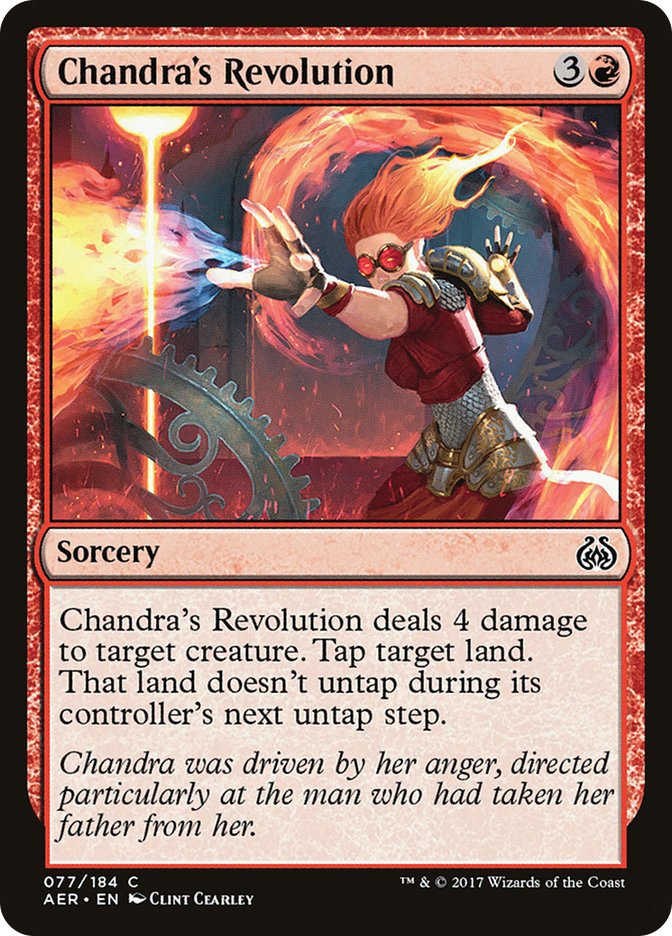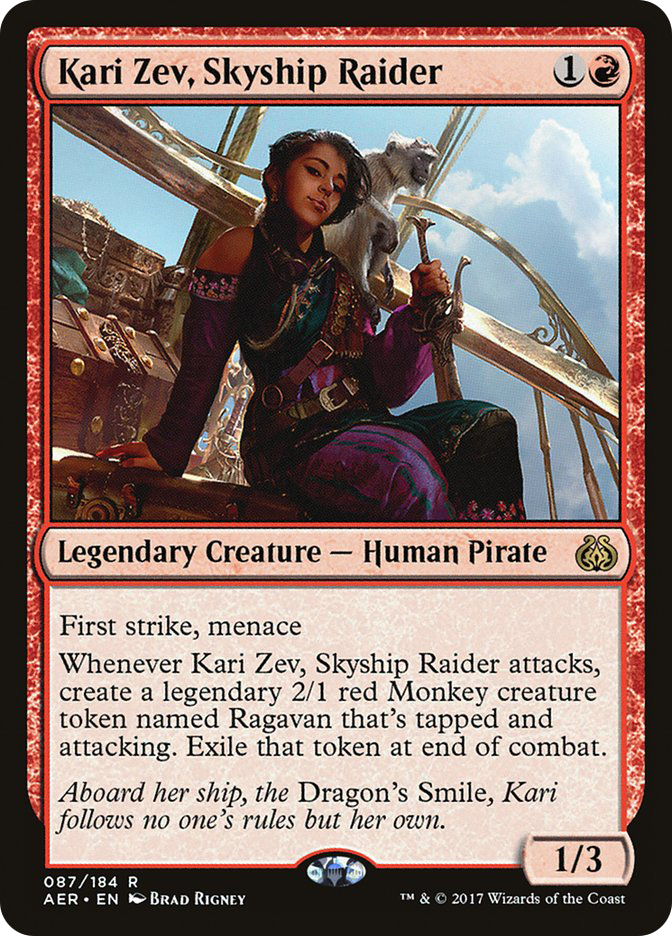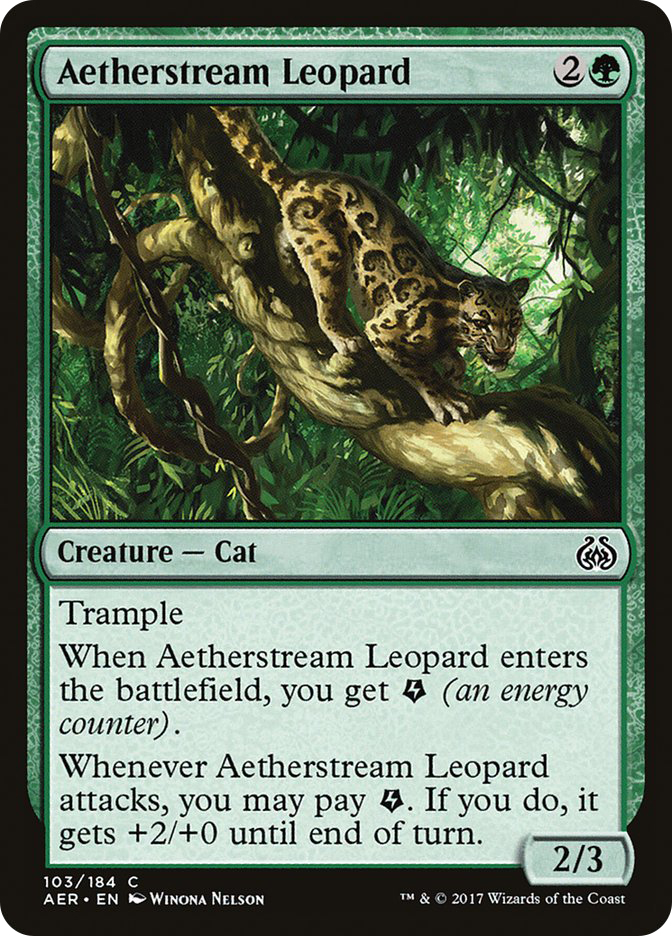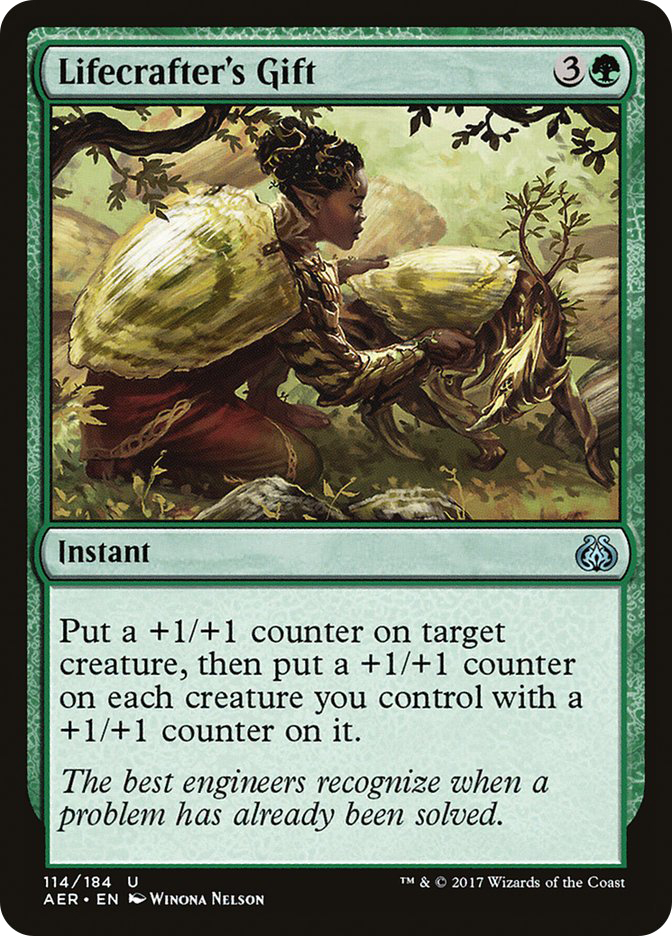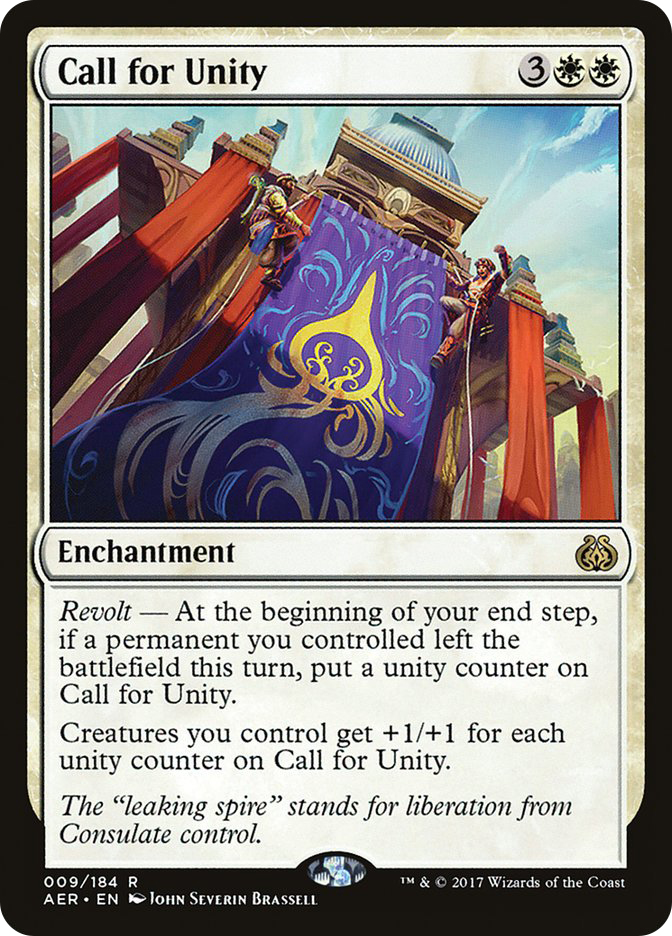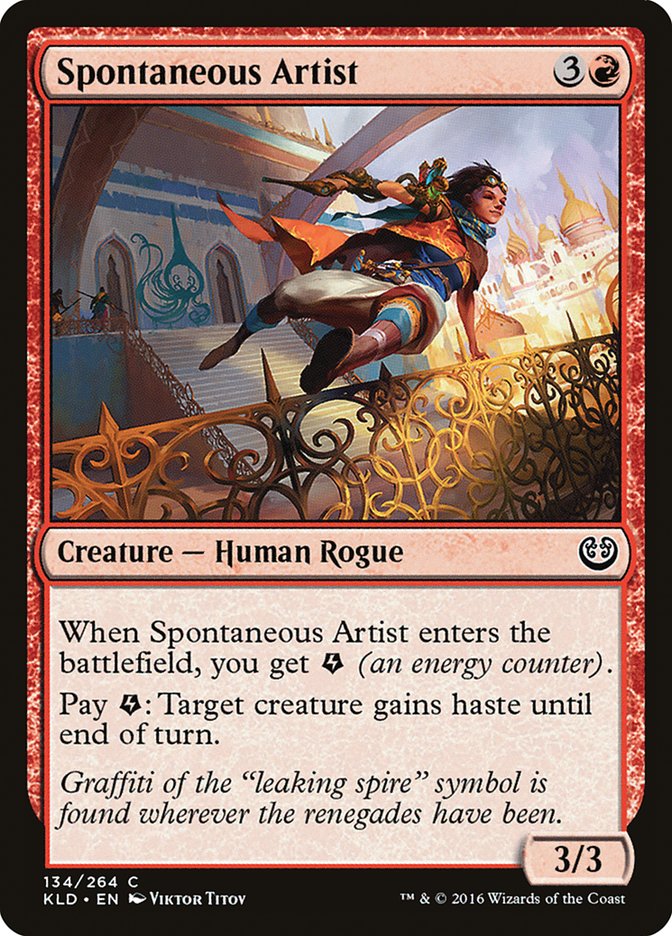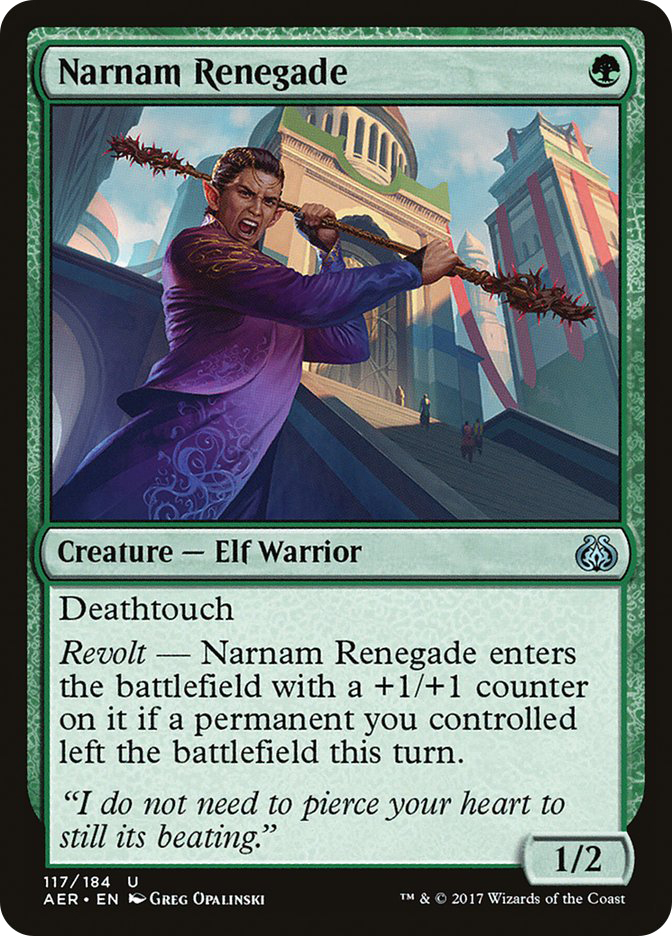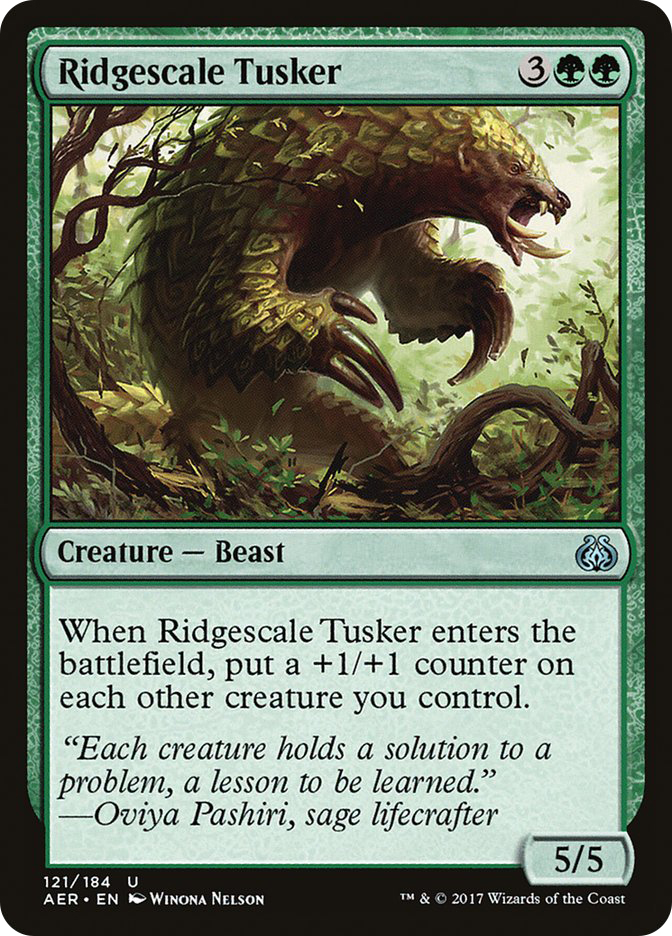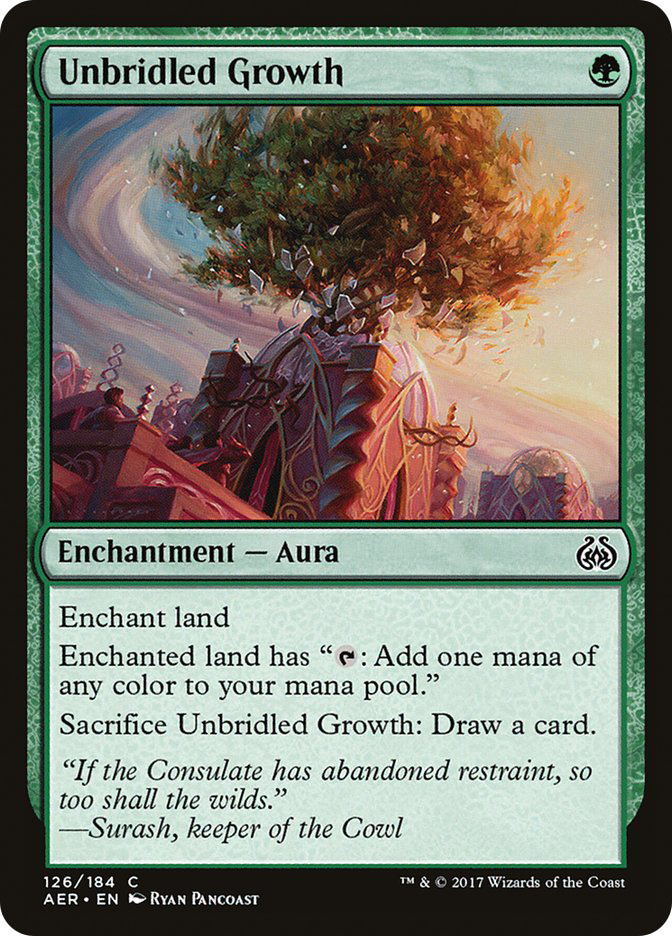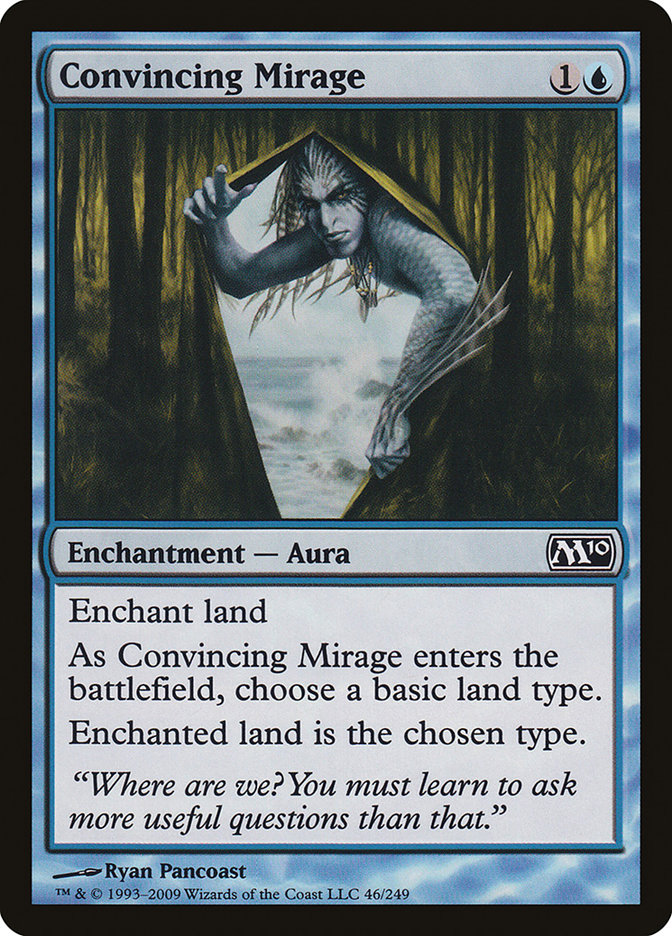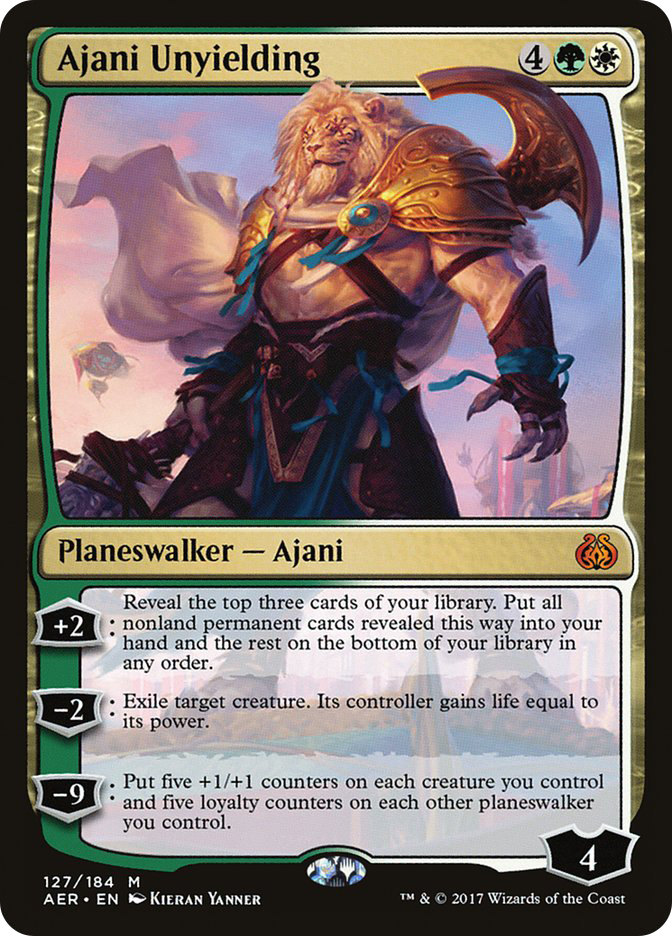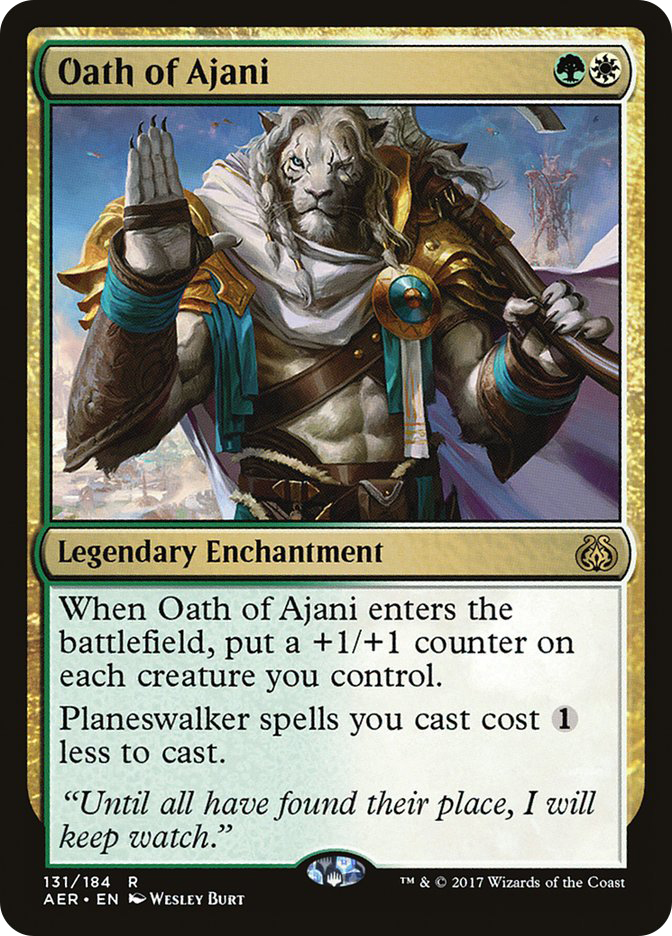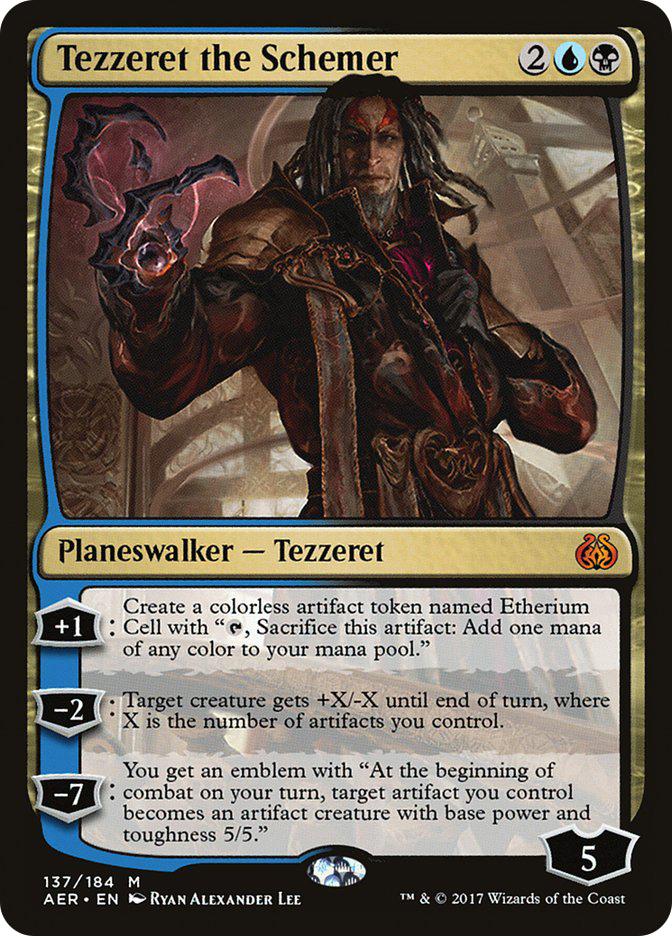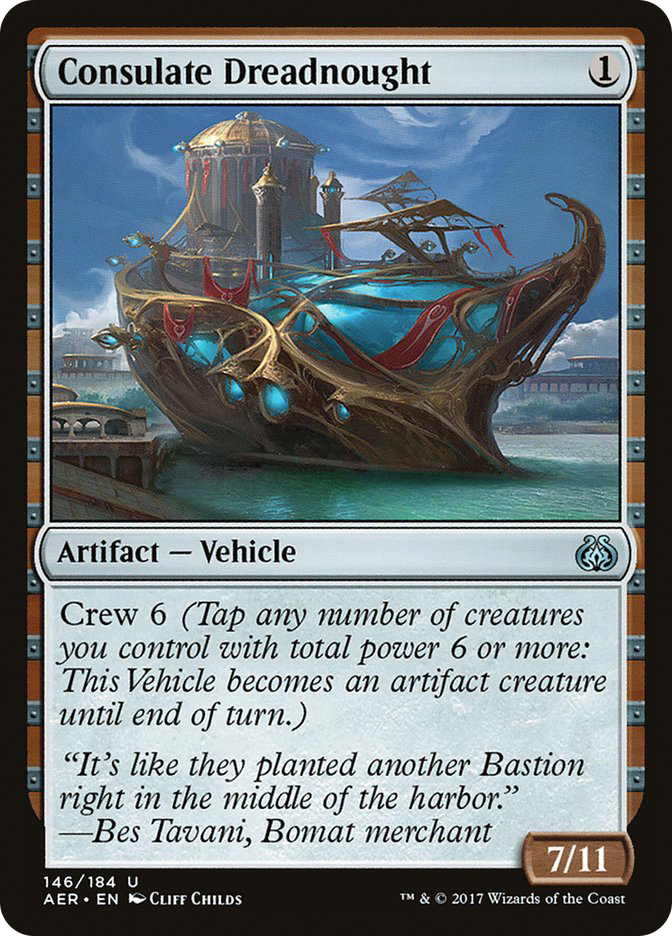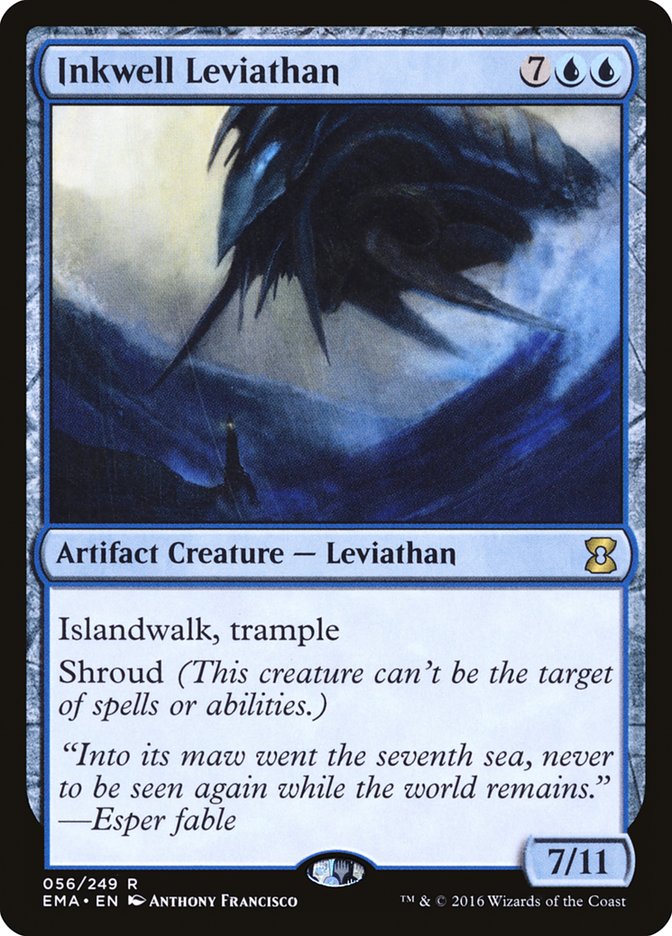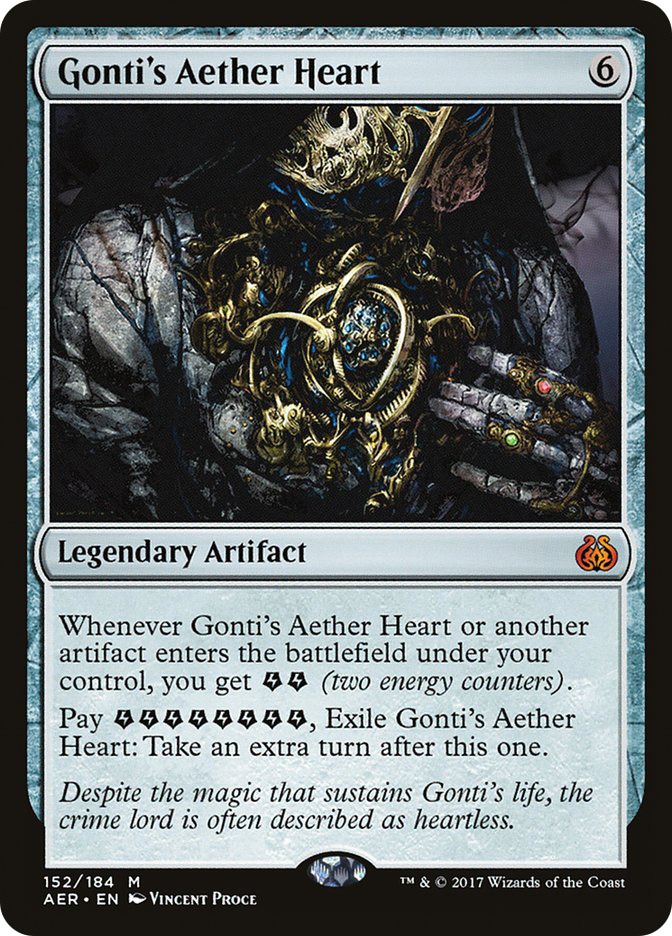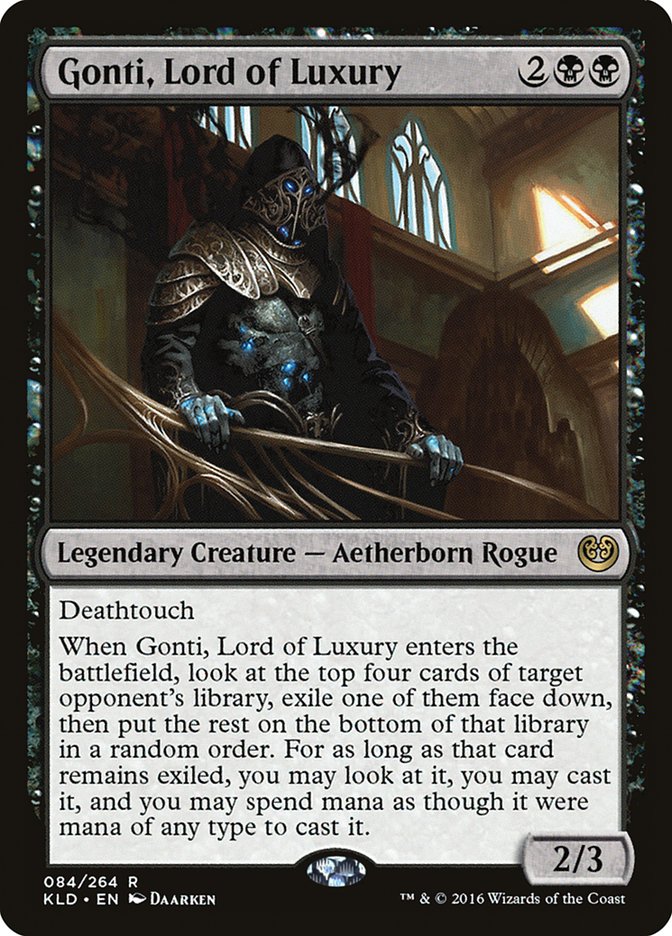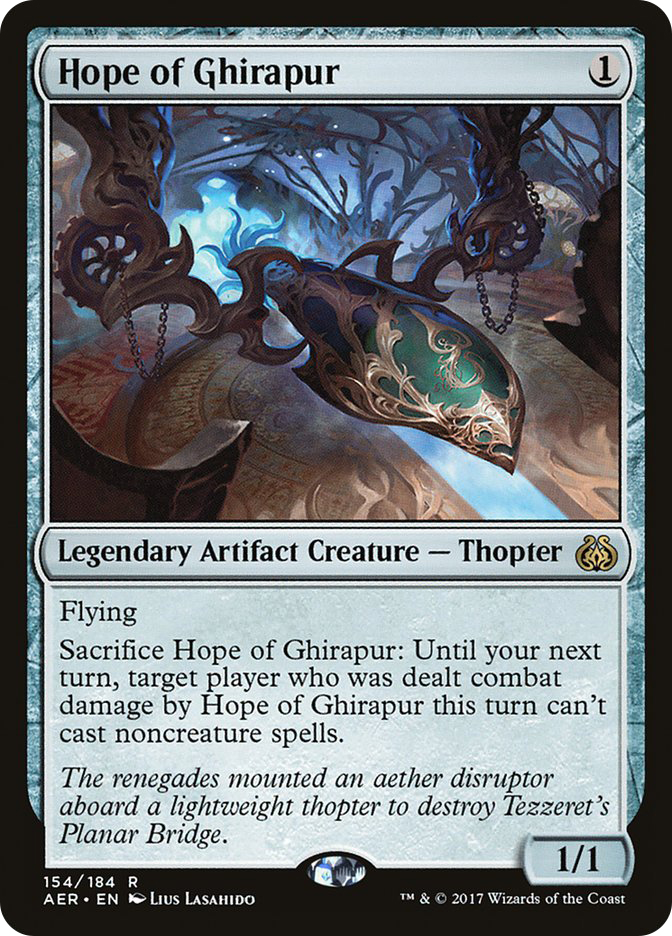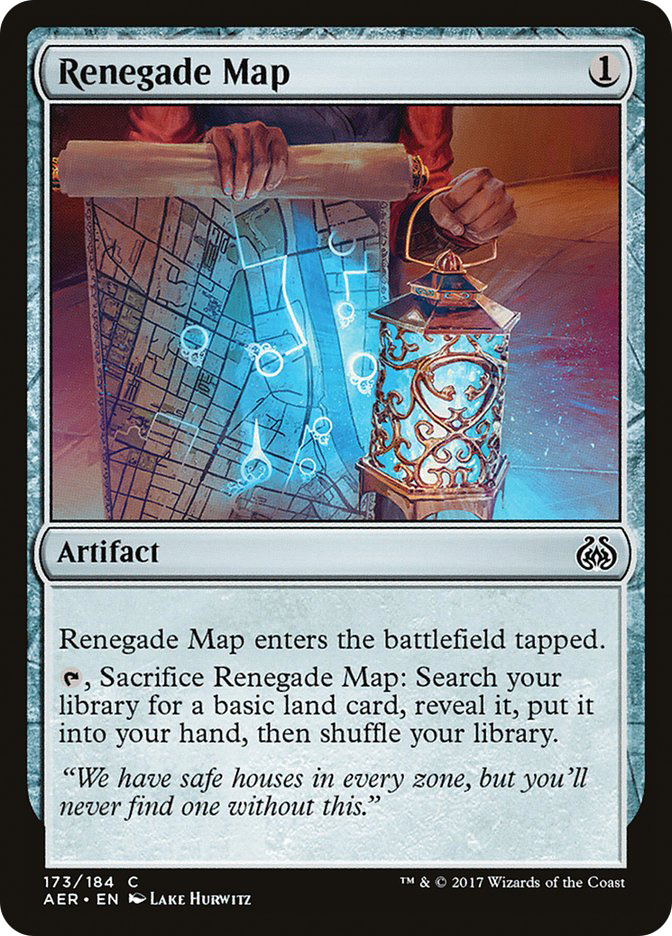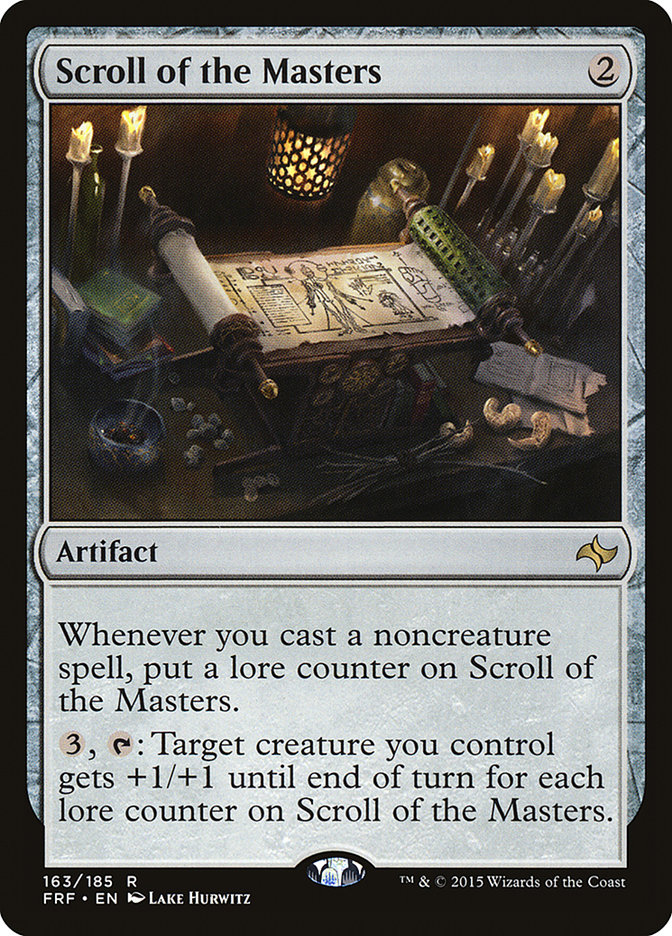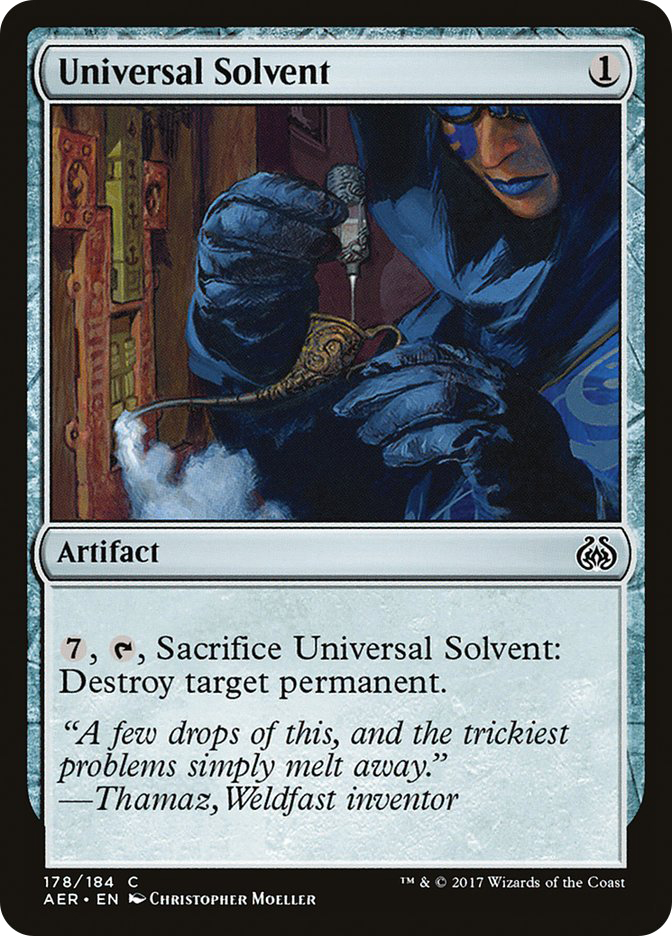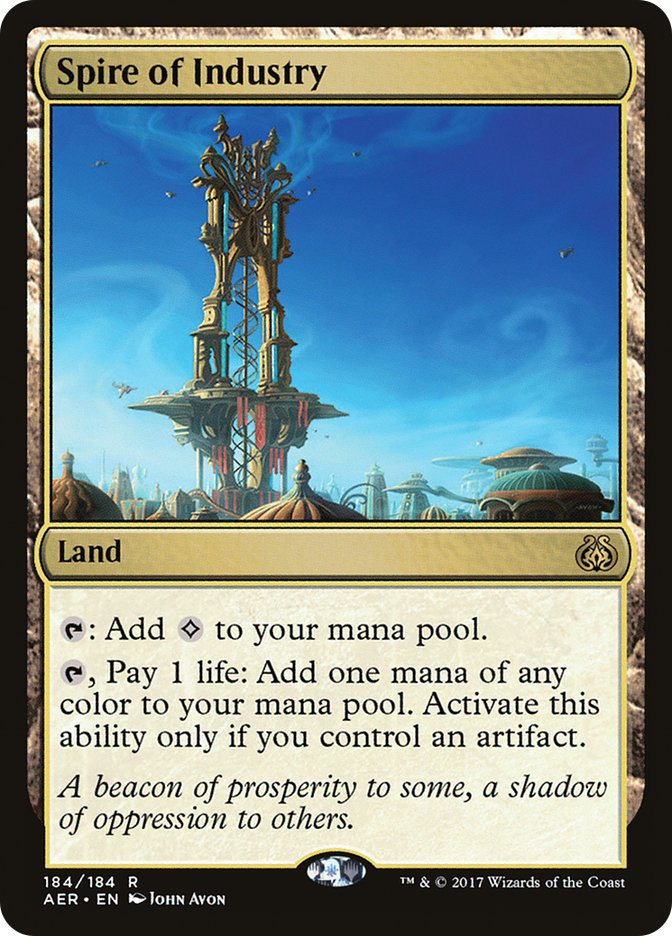Howdy, folks! It’s been a bit since you saw me last, so I wanted to take a moment to thank everyone who gave me feedback on my two recent short stories, “A Tile In The Mosaic” and “A Footsoldier’s Confession.” It’s been a while since I tried short stories like that, and between the stories’ reception and my personal satisfaction, it wouldn’t surprise me if more came your way.
Now then, let’s talk Aether Revolt.
Story Spotlight
In the broadest story terms, Tezzeret’s Confiscation Coup is now complete.
He’s effectively in control of Kaladesh (or is it just Ghirapur? The levels of government are super-confusing) and devoting his efforts to creating a gigantic Planar Bridge for…reasons.
Unsurprisingly, the creators of Kaladesh aren’t happy about that plan. The Consulate responds with curfews and general repression.
Already a noted figure of the low-level “Renegade” resistance, Pia Nalaar becomes leader of the Aether Revolt proper. Incongruously, the scene that celebrates her individualistic passion borrows heavily from the imagery of Communist propaganda (the gears symbolizing industrial progress, the hammer-wielding woman); it’s not quite Socialist realism, and at a larger size certain undercutting details appear (Pia’s expression, the ornamentation on her clothes and weapon/tool), but it’s a strange effect.
Meanwhile, because Gatewatch, the Scooby Gang has gotten involved in the affairs of Kaladesh. Chandra Nalaar, taunted relentlessly and publicly by counterspelling nemesis and would-be executioner Baral, nearly self-destructs and has to be talked down.
While the Magic Story column hasn’t yet caught up to the rest of the Story Spotlight cards, the broad outlines are there. Battle at the Bridge illustrates the climactic showdown with Tezzeret the Schemer…
…and then Dark Intimations reveals why Tezzeret sounded like a minion in his villainous monologue: Nicol Bolas was pulling the strings behind the scenes.
These five cards aren’t the only ones to depict story beats, however. Yahenni’s Expertise, for example, shows what Yahenni is capable of when finally pushed to true revolution.
And then there’s the Planar Bridge mentioned above, which has an obvious story beat in its flavor text but somehow didn’t qualify as a Story Spotlight.
As of this writing, the story is incomplete, but so far the disparate plot threads (Chandra’s rediscovery of her mother and intent to destroy Baral, the Gatewatch trying to take down Tezzeret, the renegades of Kaladesh demanding a change in government) haven’t woven together in a satisfying way. Whose revolt is it, really, the Gatewatch’s or the renegades’? Which matters more, the renegades’ struggle or the Gatewatch’s Tezzeret-toppling hijinks?
And do the renegades have any more of a mission statement than “Give Me My Aether,” anyway?
Aether Revolt contains numerous references to real-world 20th-century revolutionary movements. In addition to the “Soviet chic” stylings of Pia’s Revolution, there’s also the more nuanced flavor text of Rogue Refiner.
The flavor text’s argument about collecting aether from the air of Kaladesh has strong resonance with attitudes toward the salt in the sea.
Sea salt has been collected for millennia by people along shorelines, including in India, where British colonizers tried to monopolize the sale of salt in the 18th century and later built the “Great Hedge of India,” thousands of miles long and policed by thousands more, to harass and catch salt smugglers among other customs dodgers. In 1930, Mahatma Gandhi’s Salt March, a public (and publicized) multi-week journey by foot to collect and purify untaxed and therefore illegal salt from the shoreline as a form of civil disobedience, provided an example not only for others in India but future leaders of nonviolent resistance, most prominently Martin Luther King, Jr.
But the game of Magic is far from nonviolent (“combat phase,” anyone?) and the same holds for Aether Revolt. Between Pia’s Revolution, Rogue Refiner, and the sundry symbols and shapes of rebellion scattered through this small set, the whole thing feels like a mishmash. Wizards of the Coast listed six colleagues of South Asian descent as “Creative Consultants;” for Aether Revolt, perhaps they would have done well to add a couple of folks who had lived through, for example, the Velvet Revolution.
Perhaps they did, and I just don’t know it.
Additional Notable Cards
For good or ill, these cards caught my eye as I was going through the full card image gallery.
How large is the Consulate’s air force that “many” go on to command entire fleets? When I hear “Fleet Commander,” I’m thinking “responsible for thousands upon thousands,” as in the United Kingdom’s Royal Navy.
Release the Gremlins, indeed! I love the sense-of-voice here; it’s not just a perfect match for how I imagine a Dwarf to sound, but also the come-at-me artwork that oozes with attitude despite “just” being a dude holding a glass jar.
…where else has that tool of Sram’s been? Also, that Palumbo illustration on the left? Yummy. From the small-details-matter department, how often do you see a character with a bald spot in Magic?
Lake Hurwitz didn’t need to make the background nearly as beautiful as he did on this piece. He basically did a landscape and added a gorgeous creature to it!
How was this not a Story Spotlight moment? Picking just five is not enough. Also, a good artistic touch with the sharp angles of Tezzeret’s creation clashing with the lush curves of Kaladesh.
If that’s not a callback (between the two most urbanized planes seen so far in Magic, no less), I don’t know what is.
A warm welcome to Shreya Shetty, who debuts in Magic with Aether Revolt. The combination of whimsical fantasy with a mentorship by living Imaginative Realist deity Donato Giancola is a wonderful combination, and Scrounging Bandar in particular makes me hope to see more.
Another warm welcome, this time to Yongjae Choi. The Korean concept artist and illustrator (who goes by Korean name order with family name “Choi” first on their indusconcept.com website — wonder why the reversal on the card credit?) got started in video games and has a considerable talent for sculpture as well.
You just know the words “This! Is! Sparta!” were in the art description somewhere.
Yet another warm welcome! European illustrator John Silva makes his debut this time. Largely self-taught, Mr. Silva uses Twitch streaming (no link because he says it’s for mature audiences, but I’m sure you can find his channel if you look around his other online profiles) to support himself in part, yet another sign of how far the business of Magic illustration has come in less than 25 years.
Gatherer searching confirms: Yahenni is the only character so far to use “darling” in flavor text.
The counterpart to Pia’s Revolution, and done by the same artist, Clint Cearley. More obviously individualistic than Mom’s version, Chandra’s Revolution has a more expressive vibe with the spontaneity of fire replacing the solidity of the metal hammer. In both cases, though, the flavor text is a bit of a clunker, telling when it could be showing. I’d rather hear them in their own words.
If I could teleport one painting from this set into my living room, the tiger-striped Dragon by Volkan Baga is my pick.
She’s a teenage pirate queen whose “prince” is a goggles-rocking legendary Monkey named Ragavan. What’s not to love about Kari Zev?
As a collector at heart, this hit me where it hurts. Protect your collection!
This is our official “Winona Nelson Art Appreciation” moment.
Moment over. Moving on.
Just kidding. Have a second moment.
The “leaking spire” symbol that inverts and figuratively pours away Consulate authority shows up several places in Aether Revolt and Kaladesh, often in unlikely places. Can we just agree, though, that it’s way too ornate to be put in graffiti without some sort of stencil system?
A weird image for me. The presumably poisoned barbs on the staff are de-emphasized, and it’s hard to tell where the Renegade’s front hand ends and the building begins.
Winona appreciation, take three.
Nothing much to see here…besides Ryan Pancoast illustrating an unexpected landscape like a total boss, the way he has since his debut in Magic 2010.
Three images of Ajani, three different placements of his leather chest straps relative to his neck and lower body clothing, plus three different angles at which they’re linked to each other. This bothers me way more than it should.
Now and then (“then” being the second year of planeswalkers as a card type). He’s changed quite a bit.
Inkwell Leviathan: Making a creature a 7/11 on a random plane with flavor text that has the creature taking a “Big Gulp“? Funny.
Consulate Dreadnaught: Making a Vehicle on India-inspired Kaladesh a “7/11,” with the long history of it being used as a hurtful stereotype in the USA for people of South Asian descent (including on The Simpsons)? Not funny. I’m with Shivam Bhatt on this one, and it’s notable that Mark Rosewater has already apologized for it.
Can I just summon Gonti for 2BB and rip their Aether Heart out instead? Please?
More like “Nope of Ghirapur.”
Once more, Lake Hurwitz makes a complicated illustration seem effortlessly cool.
…but how does a container hold it? That’s what I want to know!
A gorgeous John Avon land illustration? Be still, my Vorthos heart. Wizards of the Coast knows just how to end a set, eh?
I hope you’ve enjoyed this whirlwind flavor tour of Aether Revolt. What’s your favorite card in the set, and why?


